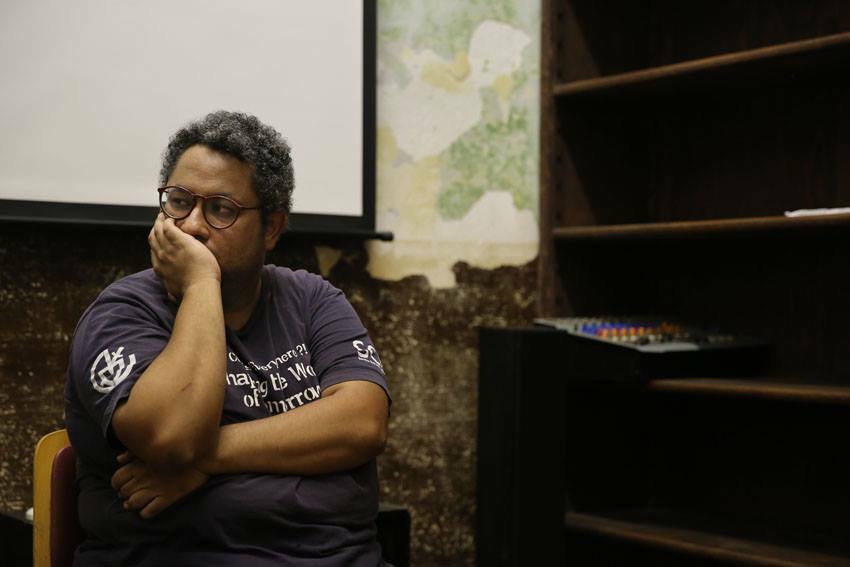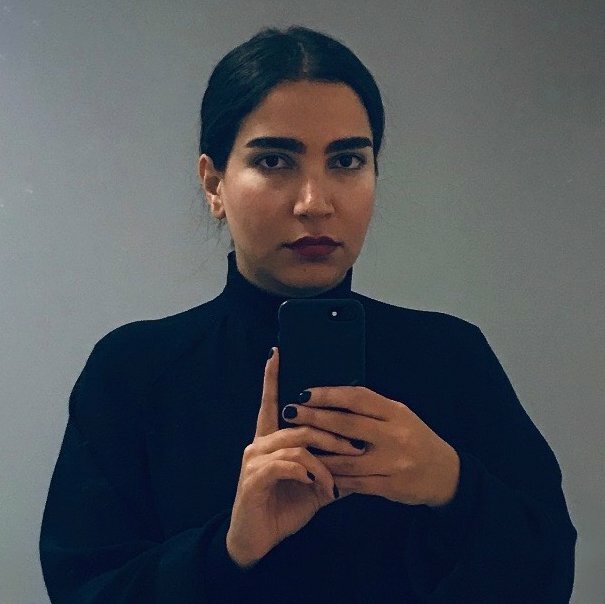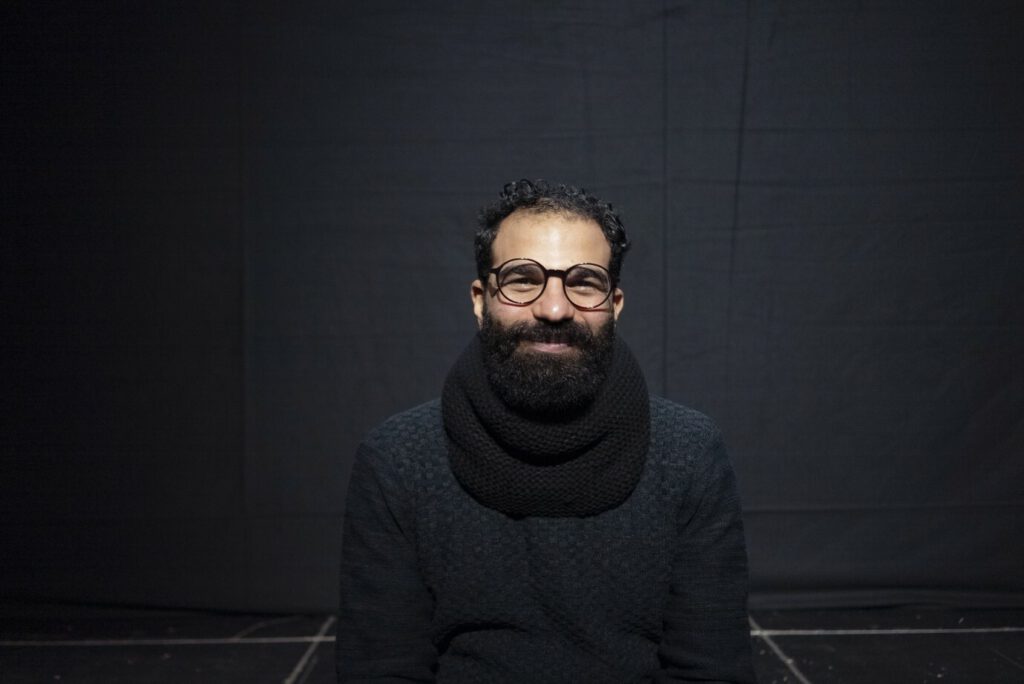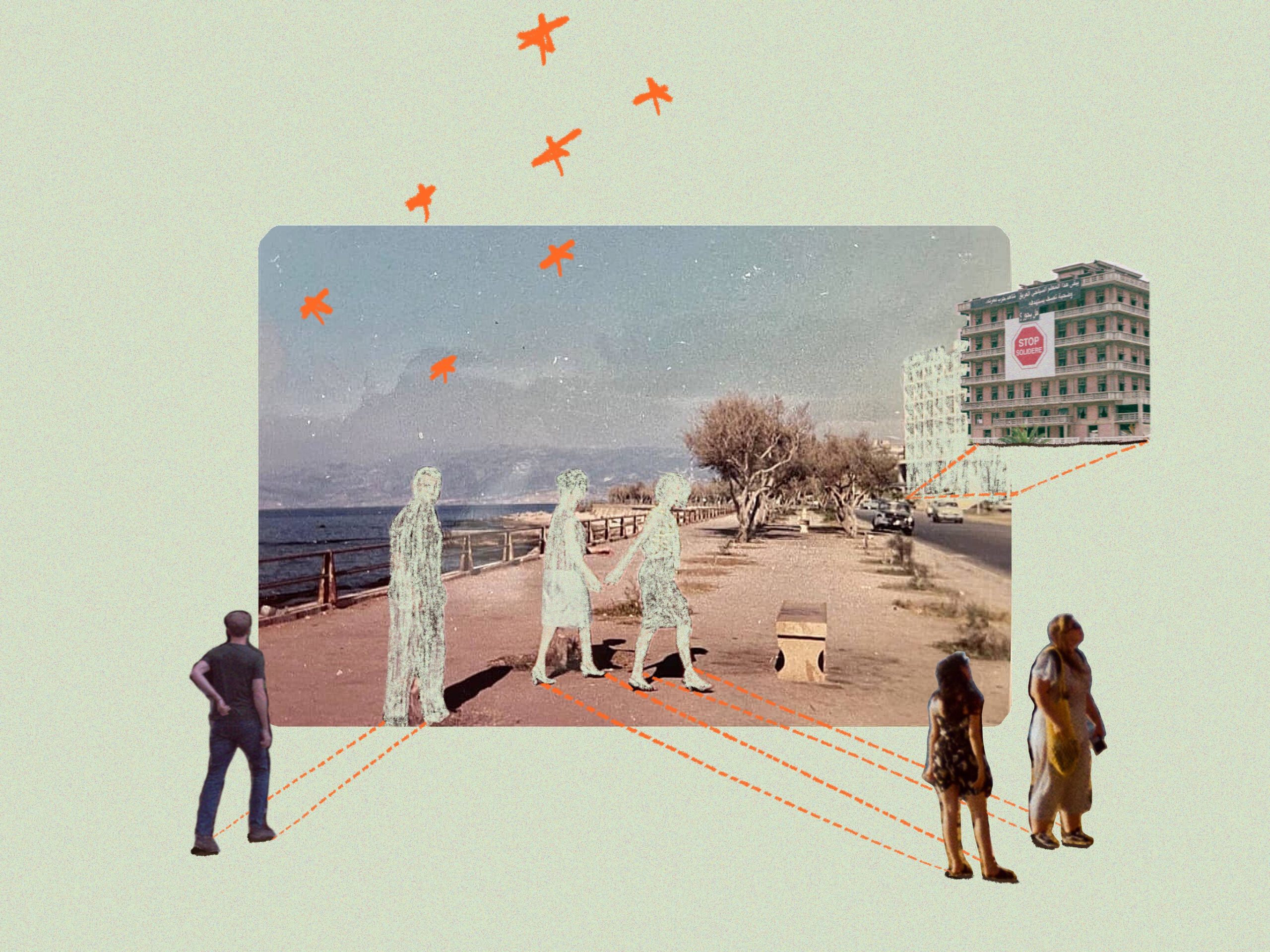“The Red City of the Planet of Capitalism” + “Gazing… Unseeing” screenings followed by a conversation between Ali Al Adawy and Adam HajYahia
Tue, May 16, 2023
6:30 PM–8:30 PM
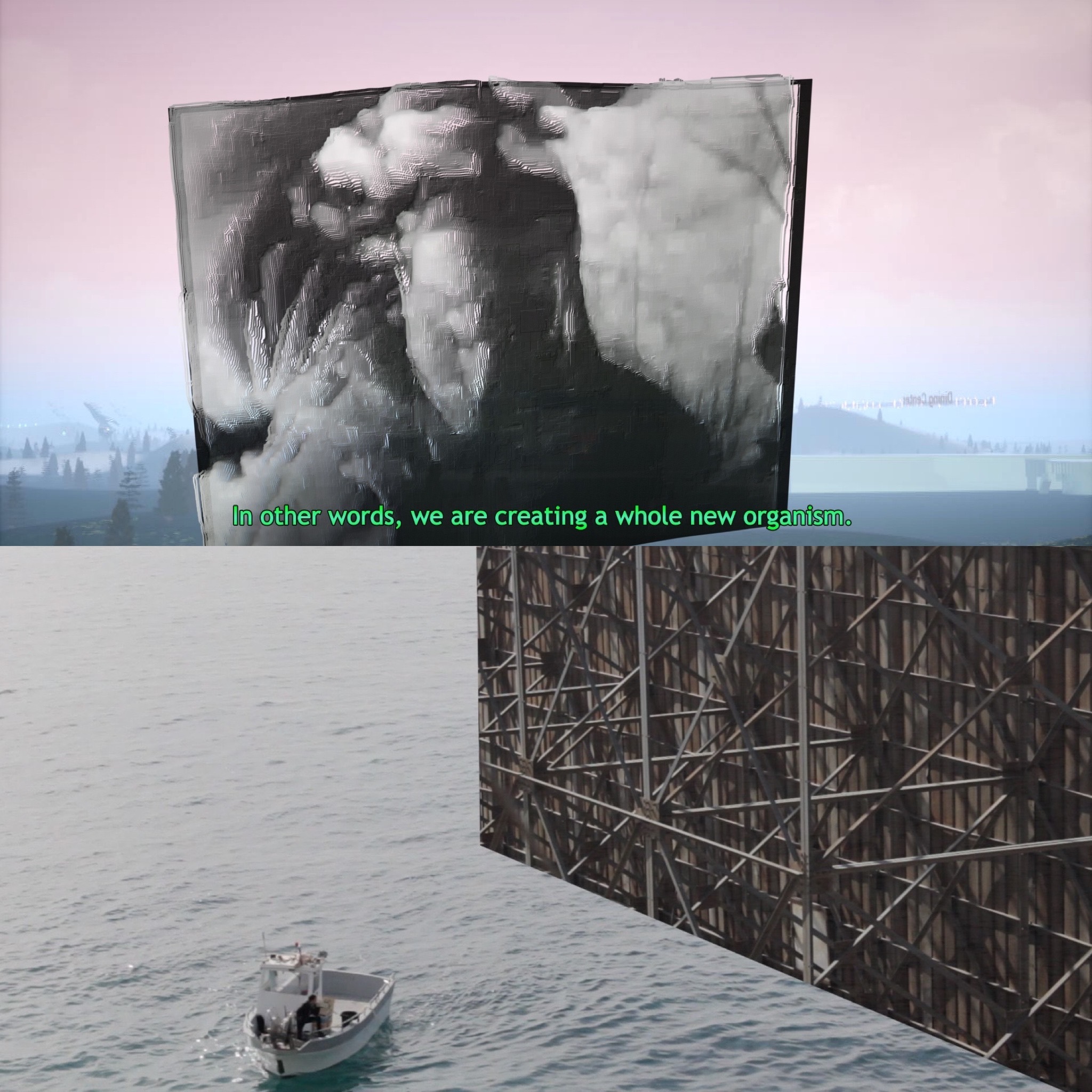
Free and Open to All. Proof of Covid vaccination or a negative test is required.
Register here.
This event is a dual screening of The Red City of the Planet of Capitalism and Gazing… Unseeing, followed by a discussion between Ali Al Adawy and Adam HajYahia.
Bahar Noorizadeh, The Red City of the Planet of Capitalism, (2021)14 mins, single-channel video (animation: Ruda Cabral, music: Mhamad Safa)
The Red City of the Planet of Capitalism is a video installation that revisits proposals for a communist sprawl in the Soviet Union of 1929. Originally developed by Mikhail Okhitovich and Moisei Ginzburg, avant-garde urban planners, Disurbanism set out to eliminate the difference between city and countryside by proposing a radical critique of urbanization. For Disurbanists, the sickness of the modern city and its inevitable centralized hegemony could be resolved only by the city’s destruction and dissemination across the Soviet landscape. In its place, they envisioned an energy and communication grid: a network of highways, infrastructure, mobile homes, natural resources, and public services on the scale of the USSR. Disurbanism would counter Le Corbusier’s modernism and its attempts to resolve the internal contradictions of the urban setting by bringing the rural into the confines of the city.
In the voice-over, we hear the letter delivered by Ginzburg to Le Corbusier, who was horrified by the avant-garde disurbanists’ plans. Reproaching Le Corbusier for his reformist vision of the city, Ginzburg articulates his communist philosophy of a fully-networked life, “you do all this because you want to cure the city because you are trying to keep it essentially the same as capitalism made it. We in the USSR are in a more favorable position — we are not tied by the past.” Disurbanist ambitions were short-lived: Okhitovich was the first architect who was sent to the camps at the very start of the Great Terror. With the assistance of a 3D modelist, the video is constructed from the handful of remaining drawings and sketches published in the 1930 edition of Sovremennaya Arkhitektura (The Journal of Modern Architecture). With the closure of that chapter in Avant-Garde practice, their emancipatory imagination of network architectures found its afterlife in the emerging field of cybernetics: Disurbanism, and other underexamined network architectures, recount the trajectory of our connected lives today: the contingent history of Web0.0. Originally commissioned by 2038, the German Pavilion, Venice Architecture Biennial 2021.
Mohamed Abdelkarim, Gazing… Unseeing.Netherlands, Egypt (2021) 8 mins, Arabic with English subtitles
Gazing… Unseeingspeculatively envisions a dystopian future scenario of an Egyptian city post-disaster. Floods have taken over the West Sahara, setting off a string of corporate and governmental measures to control the rioting population. The film is based on an interview with an imagined fugitive. Through different positions, ideological turns, and questions on economic sovereignty, the interview imagines the future of the greens’, governments’, and private sectors’ relations to infrastructure, privatization, ecology, surveillance, and migration.
Participants
Related Events
Conversation
Footnotes on the Fictive Present, Public Program Series by Adam HajYahia

Performance
Dream Riots Musical Performance with Bergsonist and Gavilán Rayna Russom

Conversation & Screening
Screening of Moonscape by Mona Benyamin followed by a conversation with Tali Keren

